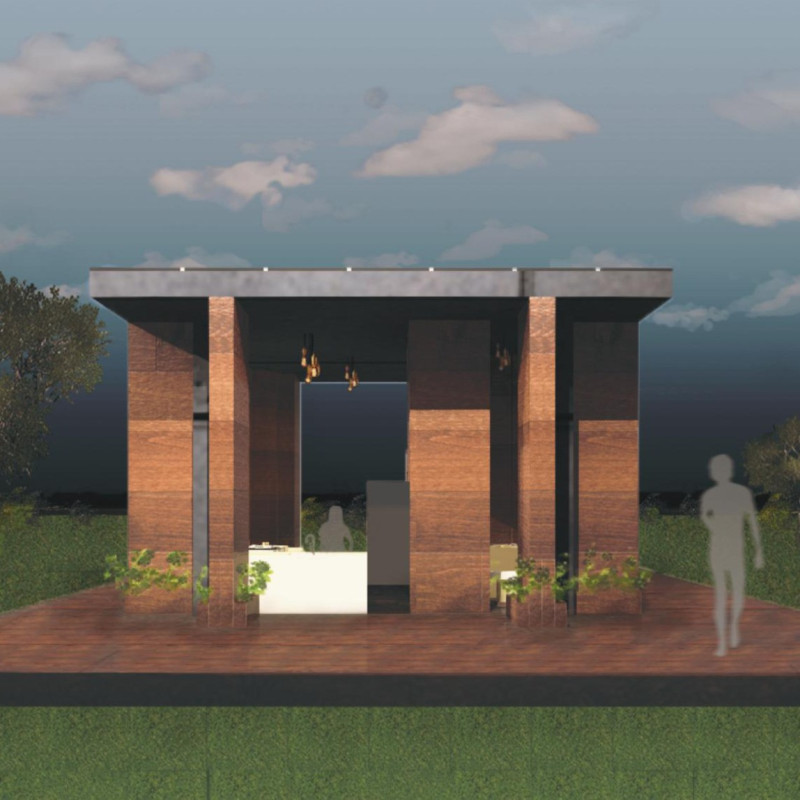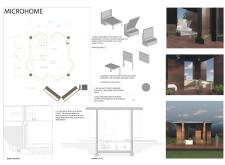5 key facts about this project
The Microhome project is a thoughtful response to the changing needs of modern living, focused on sustainability and adaptability. This compact residential unit is designed to offer essential amenities while making the most of limited space. The overall concept emphasizes multifunctionality, allowing residents to shape their living experience within a small footprint.
Flexible Design
The floor plan includes important living spaces, such as a closet, bathroom, kitchen, dining area, and a convertible sofa/bed. Each area is carefully arranged to encourage smooth movement and functional use of space. Movable walls enhance this flexibility, giving residents the ability to change their environment based on current needs. This approach effectively minimizes the constraints commonly associated with microhomes.
Sustainability Integration
One of the main focuses of the Microhome is its dedication to sustainable practices. A solar system is integrated to provide electricity and may also supply heating for water. This aligns with the modern goal of reducing reliance on nonrenewable energy sources. Complementing this is a rainwater collection system, which includes filtration for use in the bathroom and for watering plants, encouraging stronger connections between residents and their local ecology.
Multifunctional Elements
The design incorporates multifunctional furniture, such as foldable sofa/bed units and tables, which are essential in optimizing the small living space. These features allow for versatility without sacrificing comfort, ensuring that the home remains functional and welcoming. Careful attention to the design of furniture reflects an understanding of the need for practical solutions in compact living while retaining an inviting atmosphere.
Innovative Resource Management
Encouraging self-sufficiency, the design includes provisions for growing fresh herbs within the home. This feature not only supports sustainable living but also allows residents to engage with their environment. By integrating food production into daily life, the microhome becomes more than just a space for shelter; it fosters a holistic lifestyle that emphasizes the relationship between living spaces and resource management.



















































